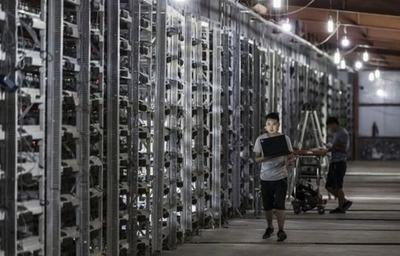In the rapidly evolving landscape of cryptocurrency mining, enthusiasts and professionals alike often face a pivotal decision: where to purchase their GPU mining machines. The price variations between online retailers and wholesale markets can be substantial, influencing not only initial investment costs but also the overall profitability of mining operations. The surge in demand for mining rigs — especially those optimized for cryptocurrencies like Ethereum (ETH) and Bitcoin-based tokens — has only amplified the complexity of this decision.
Online retailers bring an undeniable convenience. Platforms offering GPU mining machines have proliferated, boasting streamlined purchase experiences, transparent user reviews, and extra services like warranty and customer support. However, this convenience often comes at a premium. The markup on GPU mining rigs, especially during bullish market phases, can elevate prices beyond manufacturer suggested retail prices, fueled by factors such as inventory scarcity, logistics costs, and even speculative buying. Enthusiasts hunting for ETH mining rigs or the latest ASIC miners for Bitcoin should weigh these premiums against their urgency and technical needs.

Conversely, wholesale markets present an alluring proposition for those equipped to navigate the nuances of bulk purchasing. Wholesale suppliers often cater to mining farm operators or large-scale miners who require dozens, sometimes hundreds, of rigs. Here, bulk orders translate into significant discounts, sometimes slicing prices by 15-30% or more compared to retail listings. But beyond price, it’s the scale and reliability of supply that make wholesales attractive. Mining farms looking to expand their fleet of ASIC miners targeting Bitcoin (BTC) find wholesale channels essential to maintain competitive margins amid volatile coin prices.
Yet wholesale purchasing isn’t without risks. The absence of robust after-sales support can be daunting for small-scale miners or first-time buyers. Quality assurance can vary, especially if sourcing occurs from less established vendors. A 50-rig batch might bring down per unit costs dramatically but can result in headaches if a significant portion of machines arrives faulty or underperforming. For that reason, some miners opt for a hybrid approach: acquiring initial test rigs from trusted online retailers to understand performance metrics, then scaling up with wholesale deals.
One cannot overlook the geopolitical and logistical dimension impacting price discrepancies. Import tariffs, shipping delays, and regional power costs influence final retail prices dramatically. For example, miners in regions with higher electricity costs might prioritize efficiency over sheer hash rate, making the selection of GPUs or ASIC miners different from their counterparts in low-cost energy zones. Moreover, during chip shortages or sudden crypto market surges — like Dogecoin’s viral rise or Ethereum’s network upgrades — retail prices can outpace wholesale market adjustments by weeks, creating arbitrage possibilities for savvy miners.

Hosting services have emerged as a strategic middle ground, particularly for miners lacking adequate infrastructure to house and maintain their rigs. These services often negotiate wholesale prices en masse, passing on some cost savings while providing power, cooling, and maintenance solutions. This model becomes especially attractive for individuals interested in Bitcoin or Dogecoin mining but deterred by the technical complexities of rig management. Hosting can mitigate downtime risks and maintenance headaches, albeit at a monthly fee that must be factored into profitability analyses.
In considering price comparison, miners should also look beyond the purchase cost. Total Cost of Ownership (TCO) includes power consumption, cooling systems, maintenance, and even opportunity costs tied to machine obsolescence. For Ethereum miners utilizing high-end GPUs, power efficiency adjustments may tip the scale towards retail purchases if they deliver newer, more energy-efficient models not yet available in wholesale markets. Meanwhile, Bitcoin miners eyeing ASICs might find better pricing spreads in wholesale orders but must anticipate rapid depreciation as next-gen models roll out.
Ultimately, the decision between online retail and wholesale markets is multidimensional, hinging on factors such as scale, risk tolerance, technical knowledge, and the specific cryptocurrency targeted for mining. Cryptocurrency exchanges’ price volatility also play an indirect role; miners needing rapid scaling in response to bullish runs may accept steeper retail prices for immediate availability, while those with long-term strategies might leverage wholesale deals during market dips. Versatility in approach, accompanied by astute market intelligence, distinguishes successful miners from the rest.
In closing, whether one is mining Bitcoin with top-of-the-line ASIC miners, Dogecoin with GPU rigs, or Ethereum with specialized graphics cards, balancing price against reliability and operational needs is crucial. The dynamic interplay between online and wholesale markets reflects the broader challenges and opportunities in cryptocurrency mining — a sector where technological innovation and economic strategy continuously redefine what success looks like.




Leave a Reply